– Bananas
– Water hyacinth
– Seagrass
While at first glance this may appear to be a list of Shruthi Prakash’s favourite greens to have in a garden, a conversation with her will reveal otherwise. As it turns out, the three are vital components of an eco-friendly home decor and sustainable furniture brand that this 28-year-old Chennai native has been scaling since 2022.
Shruthi delves straight into the details of this fascinating journey over a Zoom call, from the living room of her home in Jakarta, Indonesia, where she is currently based.
As compelling as her story is, I am intrigued by what’s behind her. Shruthi’s narrative of the eco-friendly decor she has created through her brand ‘Ombak’ proves to be an apt description as my gaze follows the pieces set in the backdrop.
Their beauty equals — if not surpasses — mainstream decor alternatives that are often manufactured using plastic, finished wood and treated fabrics.
Through ‘Ombak’ which translates to ‘a large wave’ in Bahasa (the language spoken in Indonesia), Shruthi wants to urge consumers to invite sustainability into their homes for a cup of coffee, eventually making it a permanent fixture in their daily lifestyles.
The journey from a management professional engaged in business development for five years to an entrepreneur has had its share of twists and turns. And there was one pivotal moment that marked the shift.
“I would oversee design and marketing for brands in the real estate space as part of my family’s advertising business. I would often be tasked with designing the stalls at exhibitions where these brands would display some of their work. It was during these times that I began to get interested in home design,” she points out.
From early on, Shruthi insists she saw furniture and home decor as a route that would enable her to champion natural fibres. “A means towards an end,” she notes.
While work on Ombak began two years ago — albeit unofficially, since the brand was just a project back then — things took off when Shruthi moved to Indonesia following her marriage.
The move provided her a window into a new culture, one that displayed great acceptance of eco-friendly decor and was setting a precedent for the rest of the world in this space.
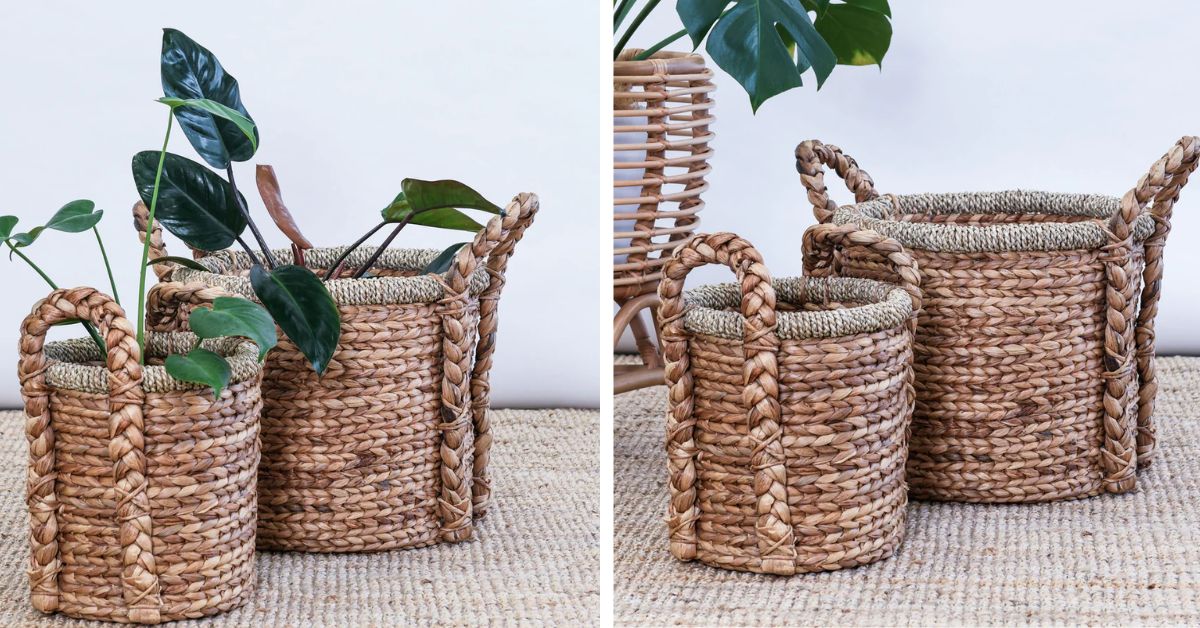
Ombak, officially registered as a company in Indonesia and India, is her attempt at tying together her passion for social impact with her love for design. “When I leaned into my interest to run a business by myself, I wanted to make sure that it was socially aligned and the profit wasn’t derived solely from money, but that I was also doing something valuable.”
And the results are telling.
Value in waste
“Imagine waking up every morning and taking supplies out of cabinets that you know are made out of banana fibre. These simple everyday moments serve as reminders for you to be eco-friendly,” she smiles.
She shies away from positioning her brand as a sort of gold standard of eco-friendly decor but instead urges people to look at it as an attempt to imbue sustainability in little ways. As for the question of whether sustainable decor has a market, statistics respond.
A 2022 survey by Bain & Company revealed over 60 percent of consumers in India are willing to pay a premium for ‘sustainability products’, while 52 percent of Indians showed a readiness to increase spending on sustainable brands. It cited growing concerns about the environment and the influence of family and friends are the key motivators. With a clientele focused in India, Shruthi’s goal is to tap this potential in the coming years.
It wouldn’t be a stretch to say that Ombak is the result of the best of two cultures. Raw materials for the products are sourced from both countries. Shruthi explains why.
“If you consider rattan, one of our materials which is obtained from the palm species, India is extremely proficient at utilising it. The design aspect is very advanced. So, for rattan, I work only with Indian artisans from Kerala.”
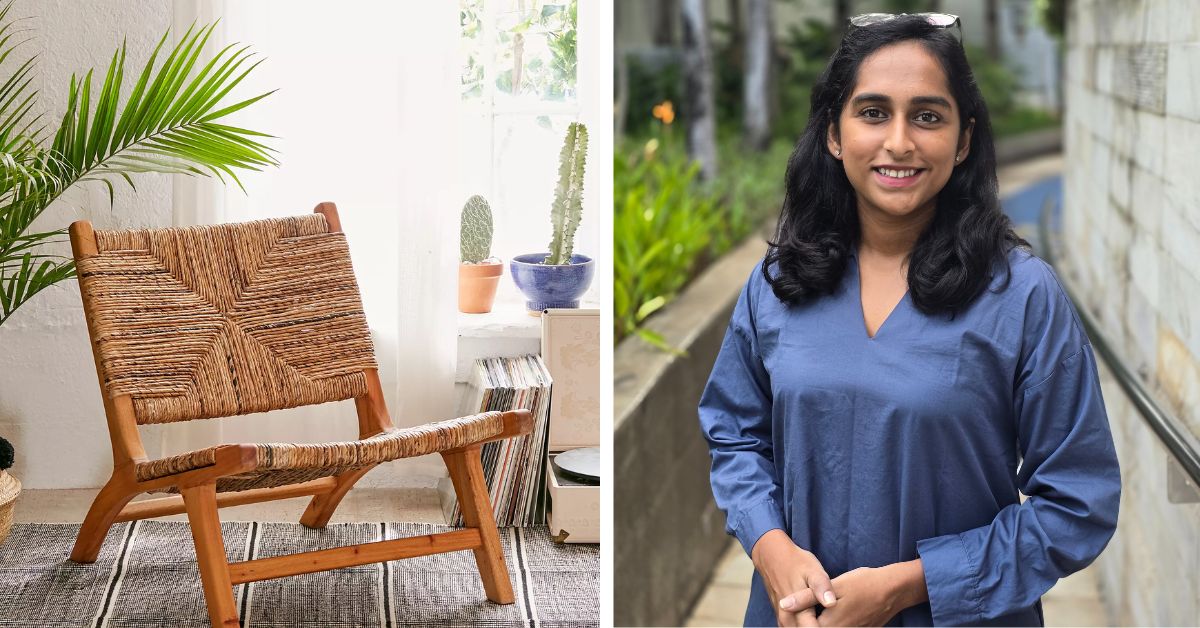
That being said, the banana fibres, seagrass and water hyacinth are procured from across Indonesia. Letting us in on the decisions that formed the basis of this interesting choice of materials, she says, “I wanted to focus on natural fibre. There are so many of them, but I decided to choose fibres that would be a blend of eco-friendly nature and good aesthetics.”
From a business standpoint too these materials are excellent. “Take the banana fibre for instance. It is abundantly available throughout Asia and has been in use for years. So, in terms of availability, it makes sense to work with these materials.”
Water hyacinth shares a similar storyline. “Do you know that in most countries, water hyacinth is considered a weed and its rapid growth often affects water beds? The plant forms sheets over the water body, preventing sunlight from penetrating.”
Shruthi has become adept at spotting value in what others might consider to be waste, and she emphasises that the search for such materials is not over yet.
She is currently exploring the potential of paper and raffia palm. “We are exploring fibres that do not compromise on the product and ones that are locally available,” she points out.
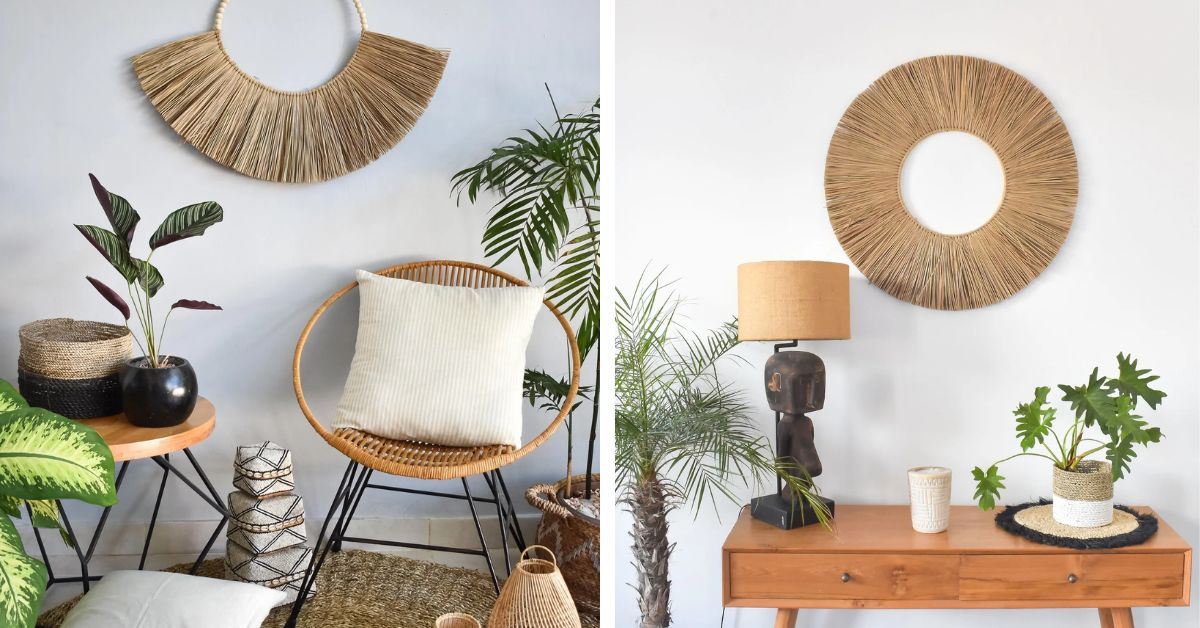
If Ombak has taught her one thing, she says, it is to not view these materials lightly. “Local communities have been using these materials in such beautiful forms for several years now. We, in fact, are late in the adoption journey. Each of them has a great threshold. Take the banana fibre for instance; it has great tensile strength.”
Creating decor out of the fibre involves passing the banana stem through an extractor that removes all the liquid from it. The remnant is dried for hours before the strings are procured from it and moulded into the desired form. “Essentially, we take the thin strands of that banana fibre and weave them into fabric sheets.”
Another way to work with banana fibre, Shruthi says, is to take the fibre as soon as it dries and rope it together to create patterns. “This way it stays truer to its natural form.”
She adds, “We try to incorporate the fibre in such a way that it does not compromise on the sturdiness of the furniture.”
While banana fibre proves to be a hero for its durability, water hyacinth is a draw for its beauty. “The colour really stands out,” Shruthi says. “When dried out, it takes on a golden hue. So, we try to keep it undisturbed and avoid any additional colouring.” She adds that the fibre is much softer compared to bananas and so makes for great foot rugs.
When it comes to seagrass, which is an underwater grass with an olive-green hue, Shruthi says the touch is rougher compared to its counterparts. “So we use it only for a wall deck or things that you won’t be touching every now and then.”
Where sustainability is a benchmark
While Shruthi’s move to Indonesia introduced her to a world of sustainable decor, a quick Google search will give you some context on why this archipelago is leading change from the front. Impeccable craftsmanship is used to transform natural materials into high-quality pieces.
Sustainably procured wood, FSC certifications, channelling waste wood into biofuel, recycling sawdust and designing while keeping longevity in mind are some of the key practices here. Shruthi had a front-row seat to this following her move.
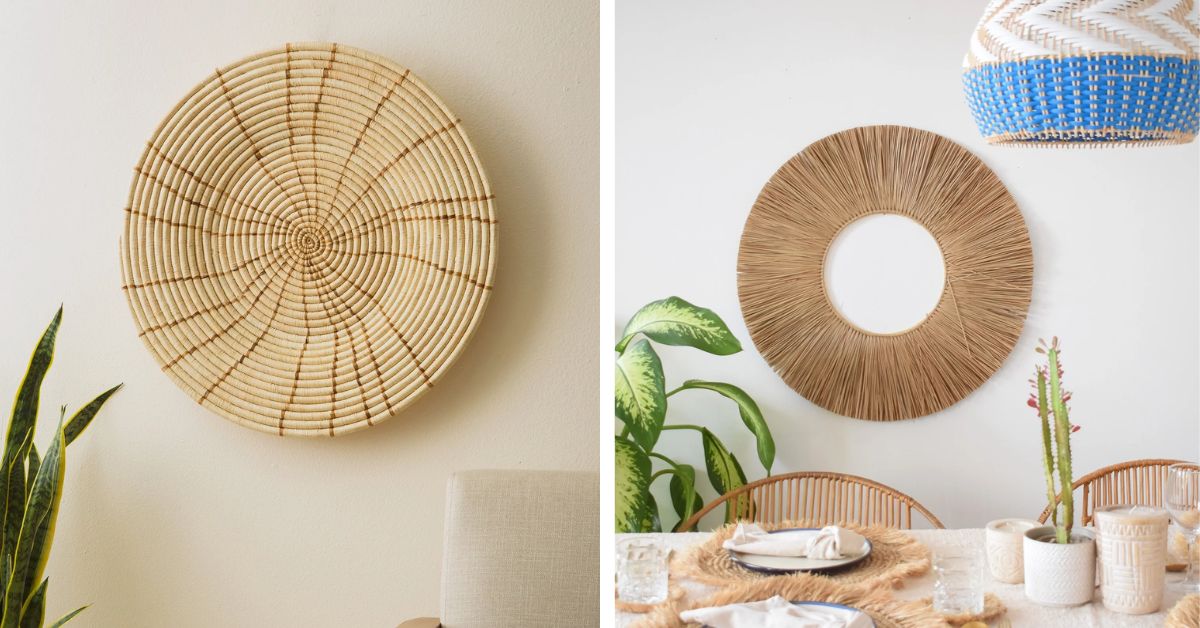
“I spent months visiting remote areas in the country to try and see how they achieved sustainability in design. The decor and furniture space really caught my eye and my journey began to take shape.”
Registering the brand in 2023 permitted her to conduct ground research and study product manufacturing in tier 2 and tier 3 cities in Indonesia. “As a foreigner, I wouldn’t be allowed to do that,” she explains. “So I had to get a separate visa in order to even come here for a long period of time and do the research.”
While language was a barrier, she says her husband was a great support as he could converse with the locals. This was prime as Shruthi’s gaze was trained on the artisan communities in the country. Partnerships with locals and artisans continue to be the foundation stone of the brand.
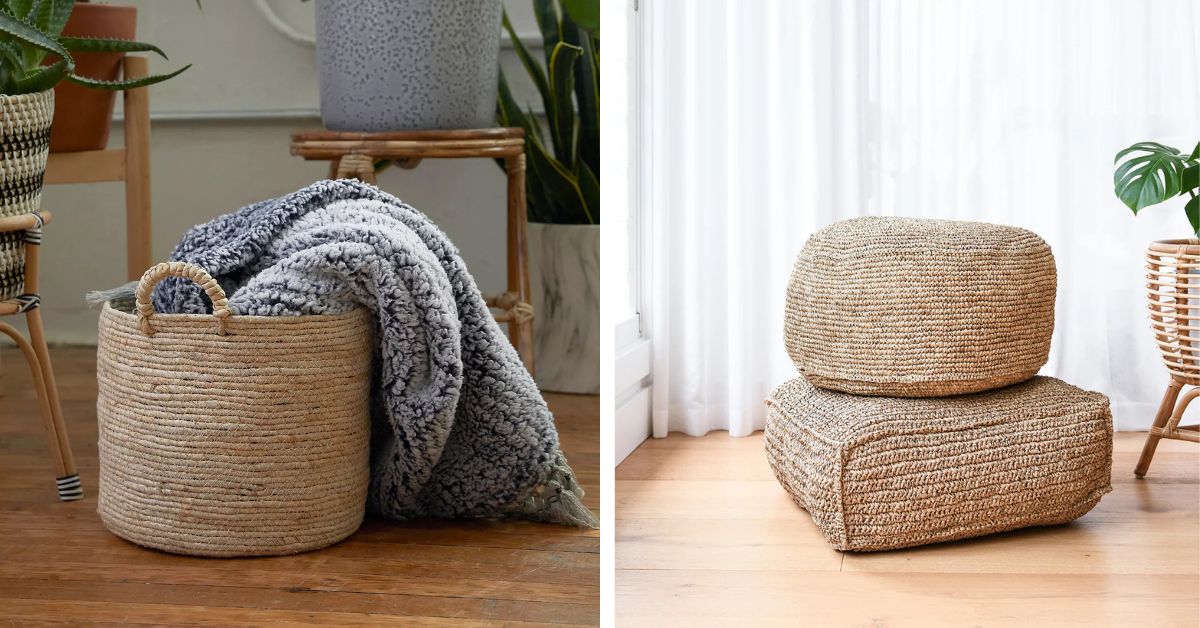
While she continues to shuttle between India and Indonesia, she says the journey has been one of learning and Ombak is a testament to these. With its range of baskets, mirrors, lamps, furniture, cabinets and wall decor, which are “100 percent handmade”, Shruthi says each experiment brings her closer to her dream of “creating a studio that is a one-stop for products made with natural fibres and fabrics”.
Yes, mainstream markets are overwhelmed by unsustainable decor options. And mindsets are tough to change, says Shruthi. “It’s always easier to just pick up a plastic chair, right?” But this is where she urges consumers to be more mindful. “A home is where we build our lives, so it’s here where we can start the good practices that can one day impact the world around us.”
And Ombak becomes a gentle reminder to switch mindsets and make sustainability a habit rather than a goal for the distant future.
Here’s where you can shop for Shruthi’s creations.
(Edited by Padmashree Pande)
No comments:
Post a Comment